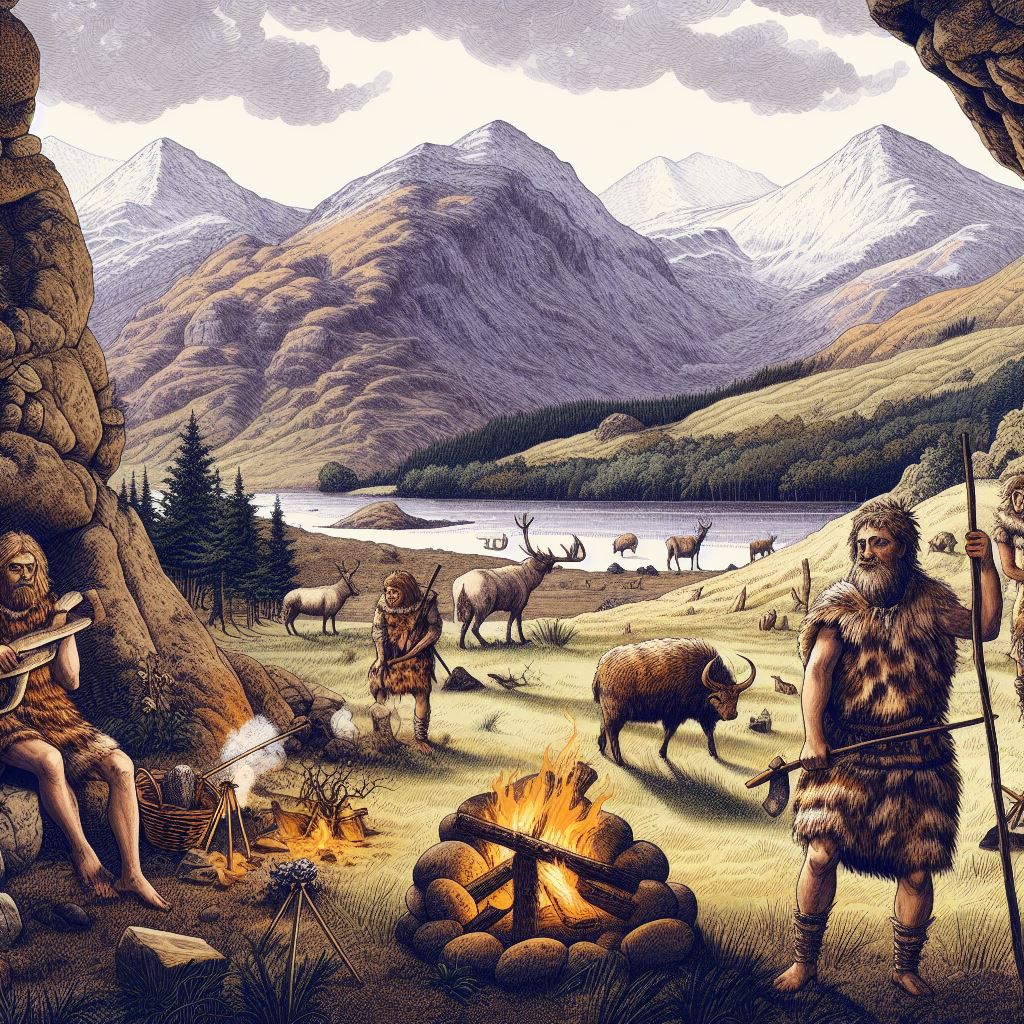Late Paleolithic
The Paleolithic period in Scotland, part of the larger Old Stone Age epoch, is a largely obscure phase due to extensive glaciation covering the region for millennia, erasing much of the archaeological record. Evidence suggests that the first instances of human activity in Scotland date back to around 12,000 BCE, during a brief warmer spell near the end of the last ice age. The inhabitants of this time were likely nomadic hunter-gatherers, relying on available fauna and flora for sustenance. However, due to the scarcity of tangible remnants or extensive tools and artefacts from this period, comprehensive insights into the lifestyles, cultures, and behaviors of Paleolithic communities in Scotland remain speculative and constrained.
The most ancient indications discovered thus far are the flint artefacts unearthed at Howburn Farm, close to Elsrickle in 2005. This discovery is singularly significant as it stands as the sole evidence of Upper Paleolithic human residency in Scotland, dated around 12,000 BCE. Intriguingly, this timeframe seems to intersect the Younger Dryas and Lomond Stadial intervals, periods characterized by a transient return of colder climates.
This event is also available in the following timelines:
